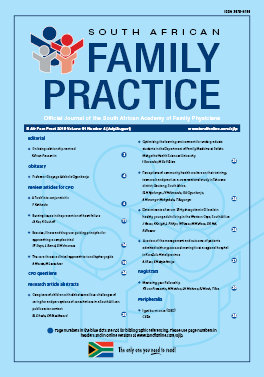Optimising the learning environment for undergraduate students in the Department of Family Medicine at Sefako Makgatho Health Sciences University
Abstract
Background: An important determinant of a medical student’s behaviour and performance is the department’s teaching and learning environment. Evaluation of such an environment can explore methods to improve educational curricula and optimise the academic learning environment.
Aim: The aim is to evaluate the educational environment of undergraduate students in the Department of Family Medicine as perceived by students.
Setting: This descriptive quantitative study was conducted with one group of final-year students (n = 41) enrolled in 2018, with a response rate of 93% (n = 39). Students were in different training sites at SMU.
Methods: Data were collected using the Dundee Ready Educational Environmental Measure (DREEM) questionnaire. Total and mean scores for all questions were calculated.
Results: The learning environment was given a mean score of 142/200 by the students. Individual subscales show that ‘academic self-perception’ was rated the highest (25/32), while ‘social self-perception’ had the lowest score (13/24). Positive perception aspects of the academic climate included: student competence and confidence; student participation in class; constructive criticism provided; empathy in medical profession; and friendships created. Areas for improvement included: provision of good support systems for students; social life improvement; course coordinators being less authoritarian and more approachable; student-centred curriculum with less emphasis on factual learning and factual recall.
Conclusion: Students’ perceptions of their learning environment were more positive than negative. The areas of improvement will be used to draw lessons to optimise the curriculum and learning environment, improve administrative processes and develop student support mechanisms in order to improve students’ academic experience.
The full article is available at https://doi.org/10.1080/20786190.2019.1613062

